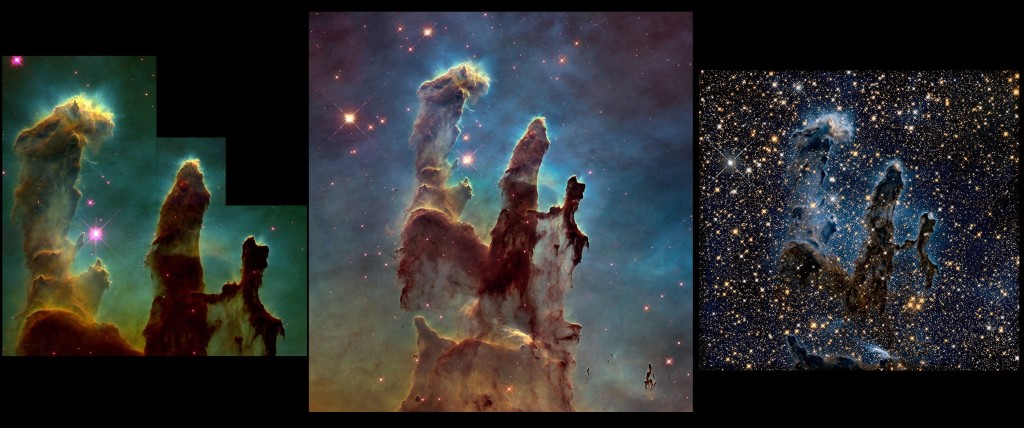In a new Hubble’s Universe Unfiltered podcast, Dr. Frank Summers, astrophysicist at the Space Telescope Science Institute, analyzes and compares three different images of the Pillars of Creation region in the Eagle Nebula (M16), taken in 1995 and 2014.
The image that made the region famous was taken on April 1, 1995 with the Hubble Space Telescope Wide Field and Planetary Camera 2. It revealed details of the three giant pillars of cold gas in M16 for the first time.
The two more recent images, taken in October 2014 and released in January 2015, were taken with the Wide Field Camera 3 (WFC3), installed in 2009. Hubble’s improved cameras brought a larger, higher resolution view of the iconic region with new features and details revealed in visible and infrared light.

The visible light image was taken combining several exposures to get the wider view of the region and revealed a clearer view of the towering pillars, while the infrared image showed a less familiar view of the region, with more bright and very young stars populating the frame.
The Pillars of Creation are found in the Eagle Nebula in the constellation Serpens. Like many other Messier objects in this region of the sky, the Eagle Nebula can be found using the Teapot asterism in Sagittarius. It is located just a few degrees above the Omega Nebula (M17) and can be found by extending the line drawn from Kaus Australis to Kaus Media, the two stars that form the base of the Teapot‘s spout.
The Eagle Nebula lies at an approximate distance of 7,000 light years from Earth. There is evidence to suggest that the Pillars of Creation may have already been blown away by a shock wave from a nearby supernova explosion, but due to the nebula’s distance, it will take about a millennium for the light showing us the new view to reach us.
Watch Hubble’s Universe Unfiltered podcast below.